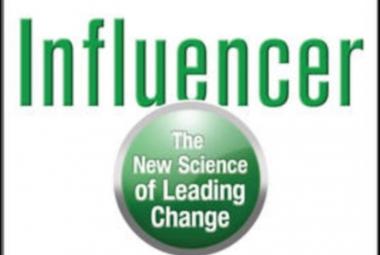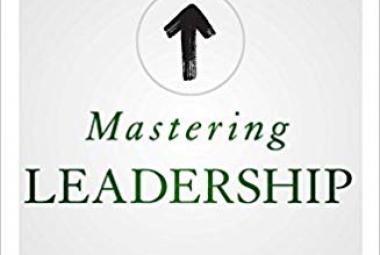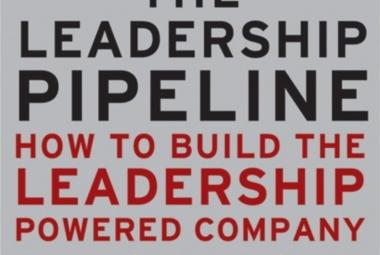The title of Peter Senge´s book the Fifth Discipline cites one of the five Disciplines to create a Learning Organization. These five disciplines: A shared Vision (1), Mental Models (2), Team Learning (3), Personal Mastery (4) and System Thinking (5).The fifth Discipline, System Thinking, is the one discipline that binds the other four and therefore the discipline where the focus of Change Management should be.
The 5 disciplines will shortly be addressed in this article, as well as three levels of explanations, seven learning constraints and nine system archetypes which will help practicing Systems Thinking.
THE FIVE DISCIPLINES OF CREATING A LEARNING ORGANIZATION in more detail, are:
Personal Mastery describes the strength of people to be proactive and keep on learning to continuously achieve results which are important for them. Two factors which are of importance in this discipline are: defining what is important to us (1) and being able to see the current reality as it is (2).
Mental Models describe the presumptions and generalizations people have which influence their actions. The first step in having people change their Mental Models is to have people reflect on their own behavior and beliefs. One of the mental models in every organization is the official hierarchy. Personal values can overcome the shortcomings of hierarchical power. One important Value Senge describes is openness. One part of openness is to quit playing ´power games´ and be open and honest about what your real needs are.
A Shared Vision means all employees in a company share the same vision of where the organization needs to go (instead of a vision-statement where management has written where the organization should be going). Only when the vision is authentic and shared, employees will automatically participate in the improvement processes to get the company closer to accomplishing its vision. Senge describes a shared vision as follows: People are not playing according to the rules of the game, but feed responsible for the game.
Team learning includes two aspects. Effective teamwork leads to results which individuals could not have achieved on their own (1) and individuals within a team learn more and faster than they would have without the team (2). The team members have to be willing to shift their mental models and be open to learn from their colleagues.
System Thinking is used to analyze patterns in an organization by looking at it from a holistic viewpoint rather than small unrelated manageable parts. Senge himself describes the elephant metaphor. When you split an elephant in two, you do not have two small elephants which you can take care of. You can only take care of the one complete elephant. An organization is like a living organism and should according to Senge also be managed as one. This discipline integrates the previous 4.
One way in which systems thinking is executed is the way in which situations are explained by employees. Senge describes THREE LEVELS OF EXPLAINATION: a reactive explanation based on events (1), a responsive explanation based on behavior (2) and a generative explanation based on structural level (3). These three ways of explaining are linked to one another. A System (level 3) leads to a certain behaviors (level 2) which can lead to certain events (level 1). The best way to change events is therefore to change the system, which will lead to different behavior.
Lifelong learning is important for an organization because learning results in creating. The more people in an organization learn, the more value they can create for the company. Traditionally there are SEVEN LEARNING CONSTRAINTS.
The first one is the I-am-my-position syndrome. This syndrome is described by people talking about what tasks they perform in an organization instead of what value they add to the company goal. Talking in terms of tasks only results in lack of accountability for the product or service the company delivers.
The second constraint for learning is the result from the first syndrome and is called the enemy is there syndrome. When people are task-focused, they are likely to not able to see their own influence on the company goals and as a result point to others in organization as the root cause of all problems.
The illusion of taking charge is the third constraint for learning, and describes the danger of reactive action instead of proactive action. Proactive action is defined by people daring to face the results of their own behavior and the willingness to change it to prevent problems from reoccurring in the future.
The forth constraint is the fixation on events instead of focus on small continuous improvements. Learning and improving should be part of everybody´s daily job and not just a temporary one day event or a project. Projects, by definition, are temporary and project teams are eliminated after a certain problem is solved.
Constraint five is the parable of the boiled frog. A Frog held in a pan in which the water temperature slowly increases will die as soon as the water eventually boils, because the frog will not notice the temperature increase. To prevent this from happening to organizations in changing environments, changes of processes should be measured and evaluated.
The delusion of learning from experienceis described because people seldom really know the outcome of their actions on the long term, while we tend to believe that we can know the long term outcome by looking at the short term outcome.
The final constraint Senge describes is the myth of the management team in which people truly believe that management can solve all problems. When one thinks about it, it is obviously impossible that one manager knows everything about all processes and has all capabilities needed to solve each problem.
As a starting point for systems thinking, Senge describes 9 SYSTEM ARCHETYPES or behavior patterns which deserve management’s attention:
- There is always a delay between the execution of actions and the final (long-term) results.
- A pattern of limited growth is the result of focusing on improving activities which focus on improving growth accelerating factors instead of reducing growth limiting factors.
- Moving the problem instead of solving it. This is what happens when only symptoms of the problem are addressed and not the root cause, The problem can than re-occur, in the same form but also in another department.
- Deteriorating Goals when situations get tuff. Goals are set aside due to a crisis or because of any other reason. This is simply not acceptable. The vision and its goals give direction to the company, especially in these difficult times!
- An escalation loop is a loop in which actors influence one another with a lose-lose situation as outcome. An example is a price-war between supermarkets, where multiple competitors eventually fight one another on being the cheapest, and none of them ends up with profit in the end. According to Senge, one should only encourage a culture in which win-win situations are created.
- Success to the successful is the archetype in which resources are allocated to the most successful activity which makes the unsuccessful ones even more unsuccessful because they receive fewer resources. This is not necessarily the best policy fir the long term.
- The politics to receive resources (for instance the budgeting game) is a situation where departments make up and alter numbers to receive more resources for their department instead of being able to see the scope of the entire organization and act accordingly.
- Solutions which do not solve, is a situation where short terms positive results lead to long term losses. For instance reducing Preventative maintenance on machines in a factory.
- Growth and underinvestment, is the trap where investing does not seem necessary because all is well at the moment. Not investing today, however, might lead to a lost opportunity for growth in the future because of a lack of skills or capacity.
In the Fifth Discipline (which is Systems Thinking) Senge encourages managers to look at problems from a holistic perspective. Stop trying to divide problems into smaller pieces and then try to solve each part. The metaphor Senge uses is the example of the broken mirror. When all small pieces of a broken mirror are glued back together, the reflection of the mirror will not be the same as the reflection from the originally unbroken mirror.
Within Systems Thinking, the in this article described nine archetypes can help to prevent common situations from happening and focus on improving the organization as a whole. It is the Principle which brings the other four principles together: Shared Vision, Mental Models, Team Learning and Personal Mastery.
Continue to:
Creating a Lean Culture - D.Mann (summary)
SOURCE:
Senge, P.M., 1990, The Fifth Discipline – The Art & Practice of a Learning Organization, New York: Doubleday (oder this book)






















